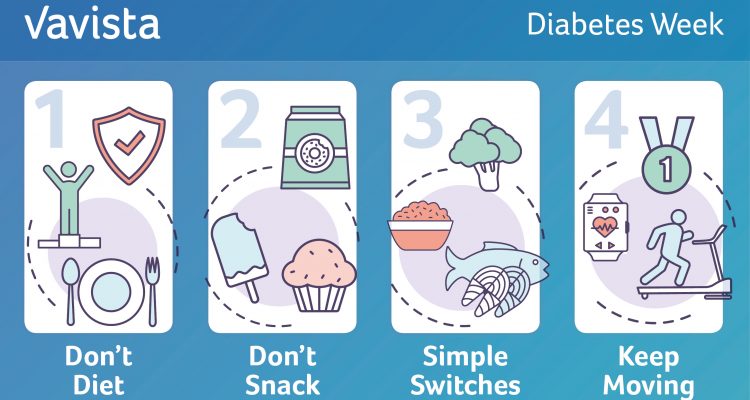Statistics show that two thirds of our population are currently overweight, and 1 in 5 of us is obese – particularly shocking when you think about the risks that obesity carries with it, most notably, the risk of developing type-2 diabetes, which is increased substantially as your BMI rises.
In fact, if you are overweight (BMI 26-30), you are 1 ½ times more likely to develop diabetes, and if you are obese (BMI 30+), you are 2 ½ – 5 times more likely! If you need help working out your BMI, this article could be useful. While diabetes used to be a disease more common in the middle-aged and elderly, it is now becoming increasingly common in younger adults and even children – a disturbing side-effect of our obesity crisis.
Here at VavistaLife HQ, we are firm believers that the onset of diabetes is something that CAN be prevented. In fact, reducing your body weight by about 5% and exercising regularly could reduce your risk of getting diabetes by more than 50%. With this in mind, we’ve put together a list of proactive, manageable tips to help reduce your risk of developing diabetes…
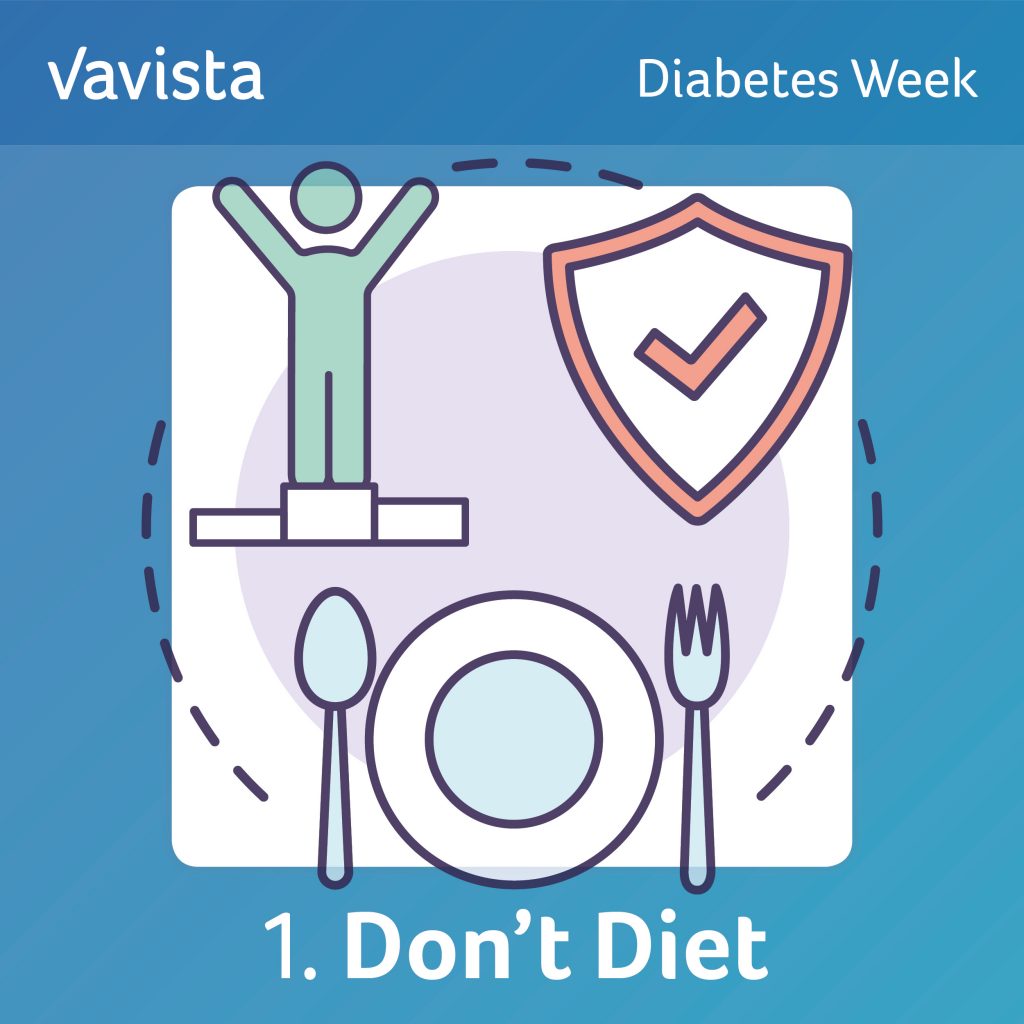
Don’t diet
Crash diets and restrictive plans just don’t work long-term – they may provide you with quick weight-loss results in the short-term, but research shows you’re likely to end up putting back on the weight you have lost, and more! Instead, think of your weight-loss journey as the chance to create a healthier, more active life. Try making small but sustainable changes in your eating habits and lifestyle, and you’ll notice you will begin to lose weight, and actually keep it off!
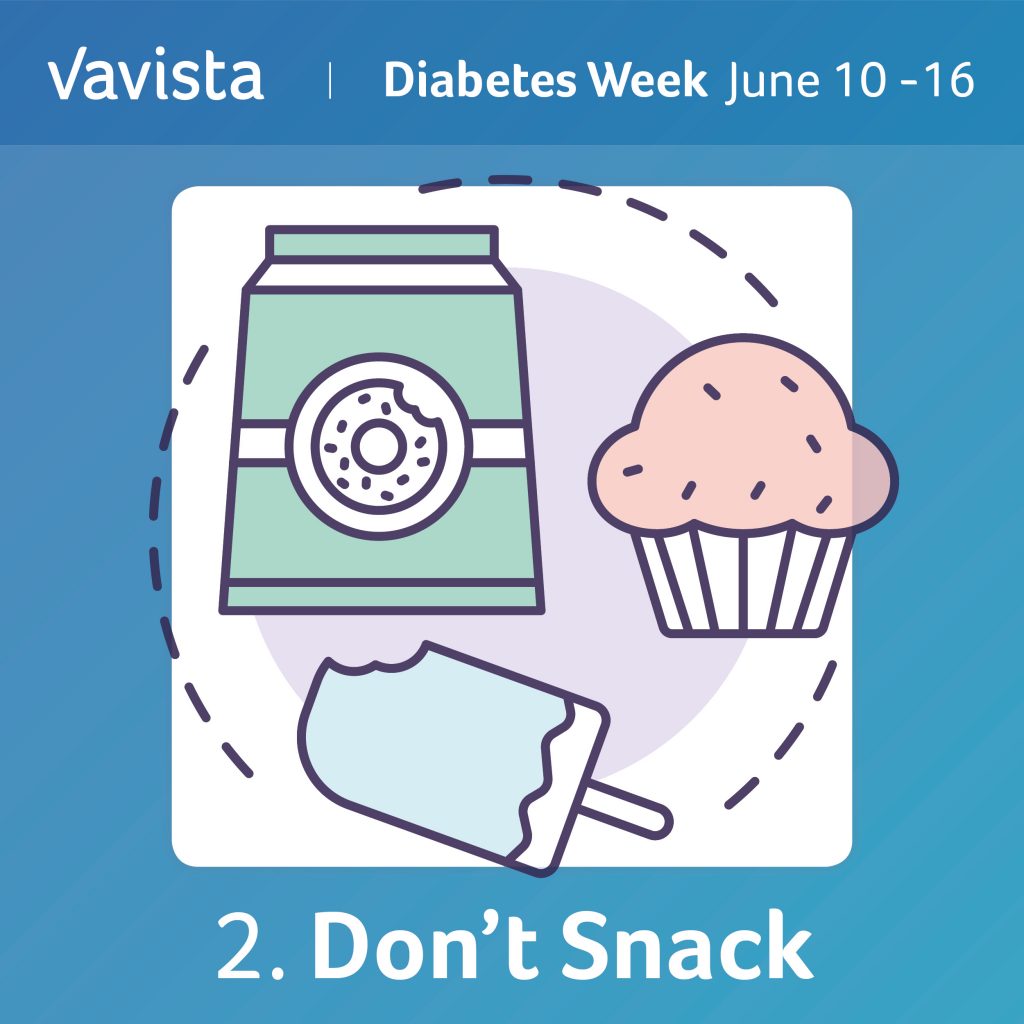
Don’t snack
One area to cut back on is snacks. A recent study showed that eating two larger meals a day (breakfast and lunch for example) is actually more effective in weight-control related to type-2 diabetes
than eating six smaller meals. So instead of spreading your eating out throughout your day, try switching to two larger meals, and see what effect this has.
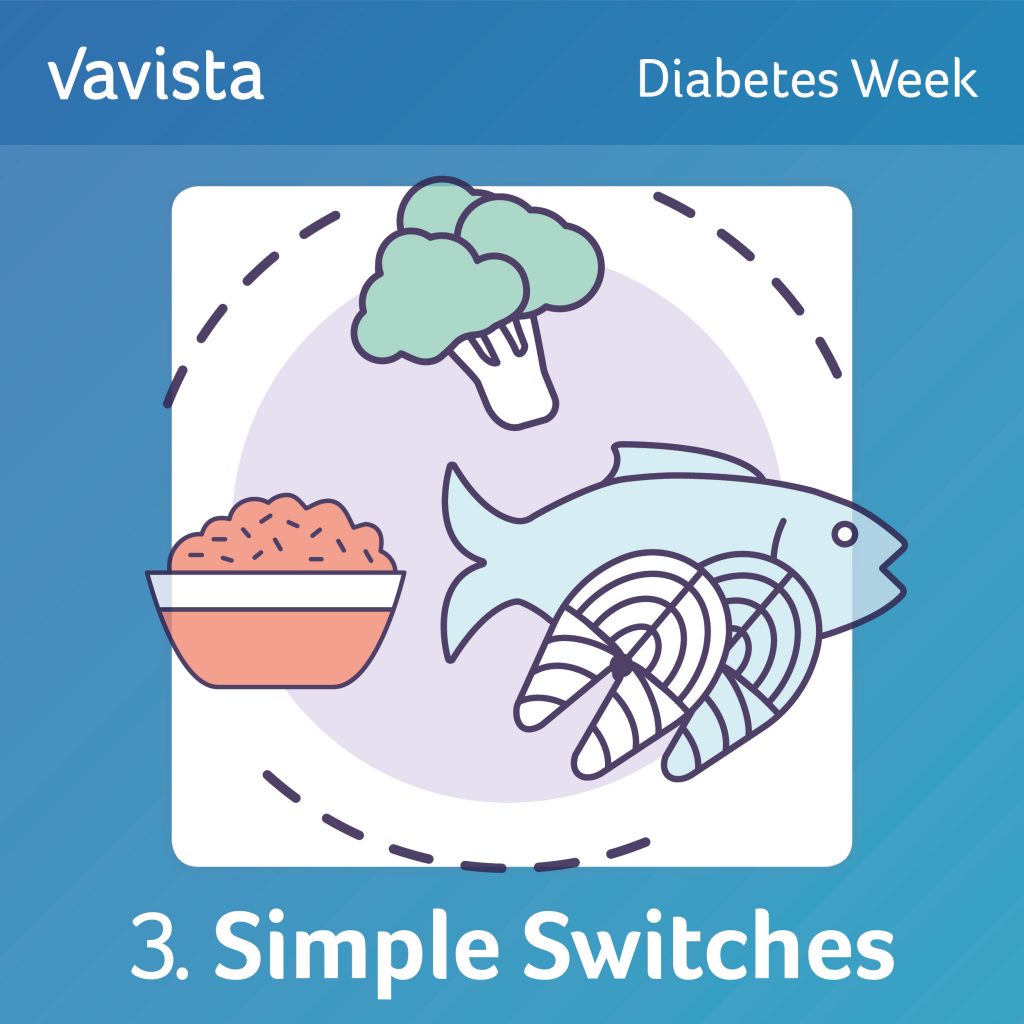
Simple switches to healthier options
To reduce your risk of diabetes try to cut down on carbohydrates. Especially processed ones like white flour, rice, cakes and biscuits. Instead try switching to whole grain varieties of bread, flour, rice and pasta. Swap your sugary tea and coffee for tasty herbal teas and replace fizzy drinks and fruit juices with water. Switch out beef mince in your bolognese with turkey mince for reduced calories… by simply switching your current eating habits to healthier ones, you won’t feel like you are depriving yourself of anything, and you’ll be more likely to stick to your healthy eating routine in the long run.
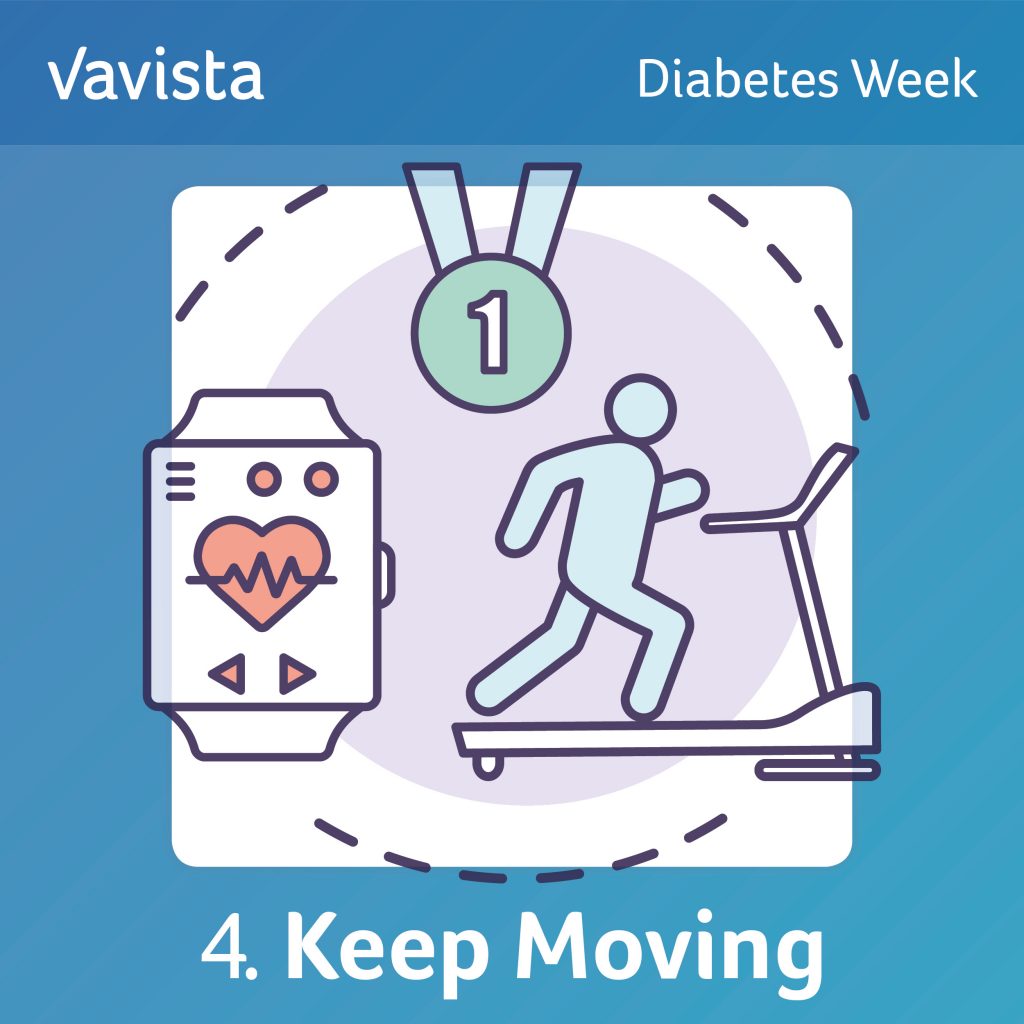
Keep moving as much as possible
Exercise doesn’t have to mean dragging yourself to the gym at every available opportunity. Instead, try building fitness into your everyday routine. Set yourself targets, such as using the stairs instead of the lift, or parking further away from where you need to go and walking the rest of the way. Mix this up with some more vigorous exercise, too – research shows that women with previous gestational diabetes were found to have a 47% lower risk of developing actual diabetes, by performing 150 minutes per week of moderate-intensity physical activity (or 75 minutes per week of vigorous-intensity activity).
Already have diabetes?
Don’t panic! There is still so much you can do. Stick with your recommended treatment to help to control your condition, but by losing 5 – 10% of your body weight, you can help to reduce insulin resistance and improve your condition so much that you may even be able to stop any drugs you are on (remember to speak to your physician). So, to avoid any of the complications that can come with diabetes (heart attacks, strokes, eye problems, kidney failure and other serious problems) then the time to take action is now!
